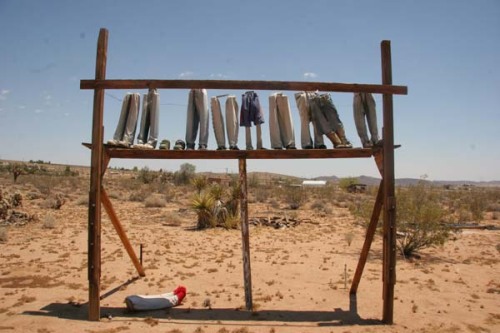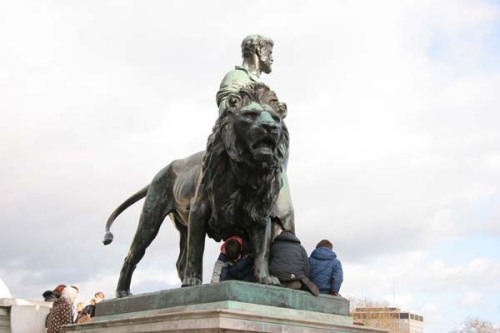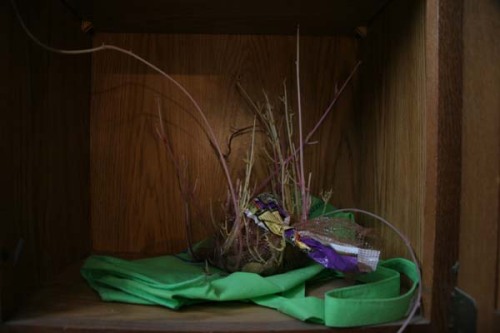When I was in school, Rudy was my special buddy in Spanish class. I liked him despite the fact that he repeatedly made me look bad by being smarter than me. Clearly, things haven’t changed much. His review has citations! All you high school kids looking to crib info from the internet instead of reading the assigned books (yes, I do look at the analytics for this site) just hit the jackpot.
Rudy sent me this review with the disclaimer that he had taken forever to finish A Child Called It because it made him so mad. Our initial conversation is below:
Elana : That book looks like some heavy reading. Did it piss you off because of the lack of authority intervention and the idea of shitty evil parents, or did the writing of the book itself make you angry?
Rudy : The story/writing is from the perspective of a young boy, so the writing isn’t supposed to be deep; however, it is detailed and graphic. No, what pissed me off was that the mother was never brought to justice, and she never repented. I read that many years later at her son’s graduation from the airforce, she slapped him. Because the story takes place in the 1960’s and 70’s, I understand that police, social workers, and teachers weren’t trained to look for abuse and deal with it. The sentiment of the time was privacy of the family.
A Child Called “It” is the survival story of David Pelzer in where he chronicles his years as a victim of various forms of abuse at the hands of his sadistic, alcoholic mother. David endures neglect as well as physical, emotional, verbal, and psychological abuse through a number of humiliating and degrading punishments for the amusement of his mother. Highly troubling is the fact that, throughout the story, David encounters several adults who could have rescued him from his plight, but for one reason or another, were unable or unwilling to intervene until much later when, after years of teacher and nurse reports, and several trips to the principal’s office, law enforcement was finally involved.
David’s ordeal takes place in the mid 1960’s through the early1970’s when things like traditional family roles were the norm and when institutions such as schools and its teachers typically had no business in the lives of students outside of the classroom. This helps explain why David’s abuse was allowed to go on for so long and why, even after David’s rescue, his mother was never held accountable for her actions.
The period before and during David’s abuse was marked by major social events such as the Women’s movement, the Civil Right’s movement, and several smaller yet significant events, which brought new awareness to victims and child abuse. According to Pecora, Whittaker, Maluccio, Barth and Plotnick, 1992:
In 1961, with documentation from 71 hospitals, a University of Colorado team headed by pediatrician C. Henry Kempe found 302 battered-child cases in a single year; 33 of the children died, and 85 suffered permanent brain damage. That same year, professional and media interest in child maltreatment was sparked by the publication of C. Henry Kempe and associates’ “The battered child syndrome” in the Journal of the American Medical Association (p. 126-7).
Kempe coined the term battered-child syndrome, which he and his colleagues defined as “a clinical condition in young children who have received severe physical abuse, generally from a parent or foster parent (Crosson-Tower, 2008). By the mid-1960s, in response to public concern that resulted from this article, 49 U.S. states passed child-abuse reporting laws (Pecora et al., 1992, p.126-7). Further, the first child abuse reporting statute was explored in 1962 at a conference held by the Department of Health, the Federal Department Education, and the Children’s Welfare Bureau (http://essortment.com, 2002).
Although child abuse victim advocacy was beginning to gain momentum among researchers and the medical community during this period, it is obvious that there was much work to be done. By the time David was in grade school, mandated reporting by all school staff should have been protocol, especially in severe and chronic cases as David’s. While teachers and nurses did document David’s injuries and pattern of stealing food, an attempt to understand why these things were happening to David was likely never followed through. Additionally, the social worker who visited David’s home should have never asked David if he was safe in front of his mother.
As Hilary Clinton wrote in 1973, “children’s rights” is a “slogan in need of a definition” (http://en.wikipedia.org, 2010).
Had the school staff been properly trained to look for signs of abuse, examine and understand David’s injuries, and notify the proper authorities sooner, David would not have had to endure for so long. Fortunately, battered child syndrome has become better known among today’s human services professionals and is even defined by the U.S. Department of Justice. If David’s story took place today, (I am sure it does all the time) I would like to think it would not go unreported. Education about child abuse is widespread among our society and people seem more vigilant and ready to take action than in the past. Intervention would occur and the children would likely be temporarily placed with family while the parent(s) get help. Reunification would be ideal, because children will always love their parents and want to be with them, but the safety of the children comes first.
Unfortunately, the book does not give the reader further insight into David’s mother’s actions or motives except for her alcoholism, which likely played a major role in her abuse of David; however, certain theories may explain why David’s mother was violent towards him. For instance, the Social Learning Theory assumes that the type of behavior most frequently reinforced by others is the one most often exhibited by the individual (Wallace, 2008, p. 10). In other words, David’s mother was probably violent toward David because that is how she was probably raised. However, this theory does not apply to everyone as one can make the decision not to perpetuate the cycle of violence. On the other hand, someone who was never abused as a child might become a violent person simply because he or she chooses to be.
Another possible explanation is the Frustration-Aggression Theory, which is based on the premise that human beings display aggression toward objects that impede their achievement of certain goals (Wallace, 2008, p. 11). In the book, it was stated that David’s mother intended to be a nurse before she met her spouse. Perhaps, David did not fit into his mother’s picture of an ideal family, so he consequently became a scapegoat. Then again, there is the issue of alcoholism, which can cause individuals to behave madly. It is probable that David’s mother suffered from a combination of issues, which no one around her, including herself, understood.
A Child Called It makes anyone familiar with the plight of victims and child welfare reflect on how much progress has been made in the past 35 years. However, we should not and cannot conform to our past accomplishments, because the world is continually changing, and our future, in my opinion, does not look bright. If we insist on bringing new life into this world the way we have been for the past 40 years, then we must take better care of our children. Otherwise, life will always just be a violent and vicious cycle.











